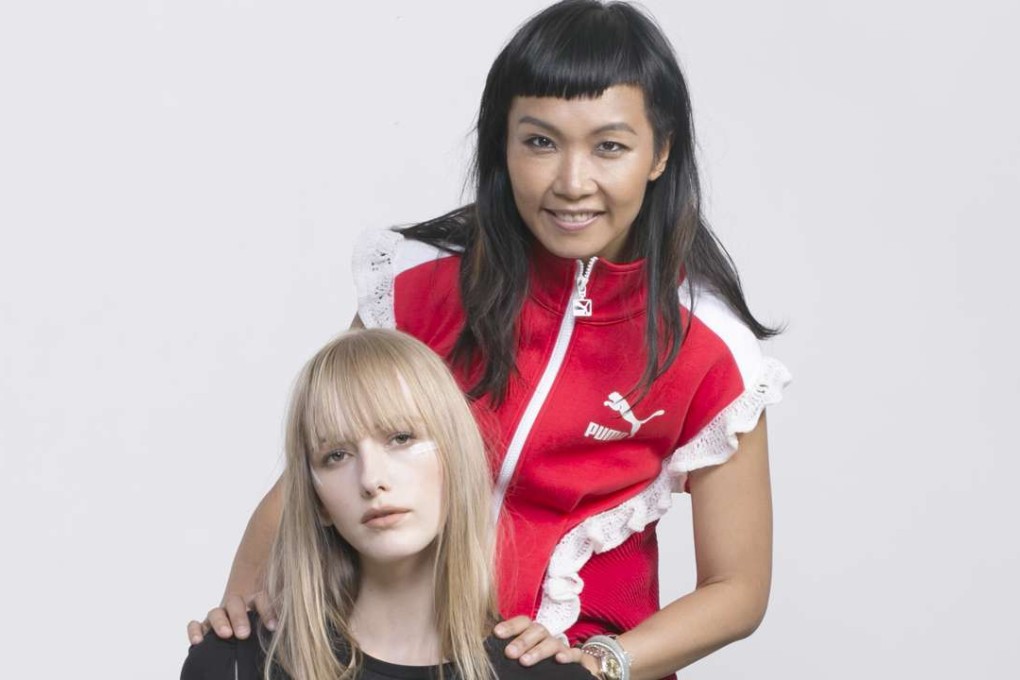Hong Kong fashion designer Johanna Ho turns old Puma jackets into athleisure wear
Designer uses sustainable, upcycled materials for a personal, eco-friendly take on the ubiquitous athleisure trend

Hong Kong designer Johanna Ho Chi-yan is known for her celebrity clientele and playful knitwear, but her latest project sees her venture into new territory. Launched at the T Galleria by DFS store in Macau, the “Johanna Ho Empowered by Puma” is a limited collection of upcycled vintage Puma tracksuits that are sporty, fashionable and eco-friendly.
“It all began with a pair of shoes,” jokes Ho at its recent launch.


For Ho, the idea of a sustainable collection was a long time coming. While her eponymous label has featured designs made from eco-friendly yarns, she really started to explore the concept of upcycling this year while designing outfits for Hong Kong Canto-pop star Eason Chan Yik-shun [Tsui’s husband]. Instead of creating pieces for him to wear at his concerts, she began upcycling clothes from his existing wardrobe. By the time the Puma collaboration was confirmed she had decided that upcycling – converting old or discarded materials into something of higher quality – was ideal, especially as Asian customers have an aversion to second-hand clothing.